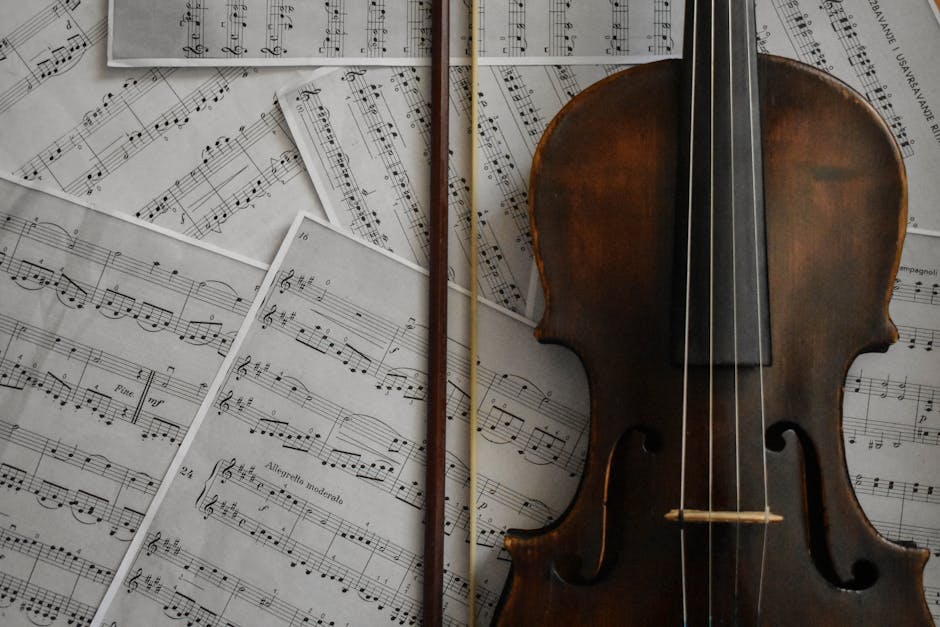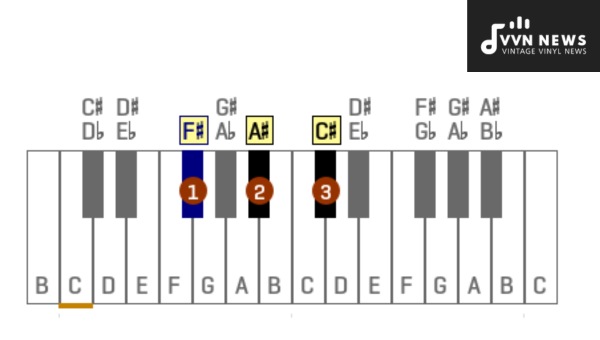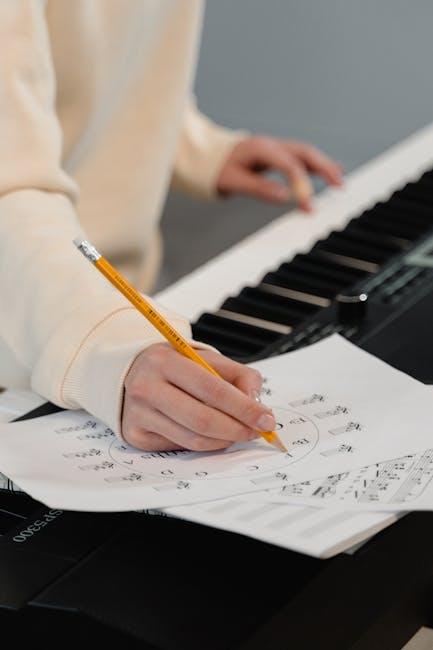Welcome, aspiring guitar virtuosos! If you’ve ever gazed longingly at your favorite rock star shredding on stage and thought, “I want to do that,” then you’ve come to the right place.
In this comprehensive guide, we will dive headfirst into the world of guitar chord theory, uncovering the secrets to unlocking the mystical language of music and unleashing your inner rock god (or goddess). So grab your guitar, your sense of humor, and let’s rock n’ roll our way through the basics of chord theory like never before. It’s gonna be a wild ride, but hey, isn’t that what rock ‘n’ roll is all about? Let’s do this!
Contents
- 1 Understanding the Basics of Guitar Chord Theory
- 2 Exploring Major, Minor, and Seventh Chords
- 3 The Role of Scales in Chord Construction
- 4 Building Chord Progressions for Songwriting
- 5 Navigating Through Chord Inversions and Voicings
- 6 Practical Exercises for Mastering Chord Transitions
- 7 Incorporating Advanced Chords and Extensions into Your Play
- 8 FAQs
- 9 Rock on with your new chord knowledge!
Understanding the Basics of Guitar Chord Theory
So you’ve picked up a guitar and you’re ready to rock out like a pro. But before you start wailing away on those strings, it’s important to understand the basics of guitar chord theory. Don’t worry, it’s not as complicated as it sounds – think of it as the secret code to unlocking all those awesome riffs and solos.
First things first, let’s talk about major chords. These bad boys are like the bread and butter of guitar playing. They’re the foundation of pretty much every song you’ll ever play, so it’s crucial to have them down. Major chords are made up of three notes – the root, the third, and the fifth. Once you’ve got the hang of playing these, you’ll be well on your way to becoming a guitar god.
Next up, we’ve got minor chords. These are like the moody, brooding cousin of major chords. They have a darker, more melancholic sound that can really add some depth to your playing. Minor chords are also made up of three notes – the root, the flat third, and the fifth. Learning how to switch between major and minor chords is a game-changer when it comes to creating emotional and dynamic music.
And let’s not forget about barre chords. Ah, the bane of every beginner’s existence. Barre chords are like the ninja move of guitar playing – they require strength, precision, and a whole lot of practice. But once you’ve mastered them, you’ll have the power to play any chord anywhere on the fretboard. It’s like having a superpower, but with more callouses.

Exploring Major, Minor, and Seventh Chords
So you’ve decided to delve into the wonderful world of major, minor, and seventh chords! Prepare yourself for a musical journey full of twists, turns, and satisfying harmonies.
Major chords are like the happy-go-lucky siblings of the chord family. They exude positivity and energy, perfect for those upbeat pop anthems or triumphant rock ballads. When you play a major chord, you can almost feel the sunshine breaking through the clouds.
On the flip side, minor chords are the moody teenagers sulking in the corner. They bring a sense of melancholy and introspection to your music, ideal for those heart-wrenching ballads or eerie film scores. Minor chords are like a dark chocolate – bittersweet and surprisingly rich.
And then we have the seventh chords, the cool cats of the chord world. With their added spice and complexity, seventh chords bring a funky edge to your compositions. They’re like the secret ingredient that takes your music from good to groovy. Hey, even Beethoven loved a good seventh chord every now and then!

The Role of Scales in Chord Construction
So you think you know everything about chord construction, huh? Well, think again! Let’s talk about the unsung hero of chord building – scales! That’s right, those little collections of notes that you thought were just for boring ol’ melodies actually play a crucial role in creating those sweet, sweet chord progressions.
When you dive into the world of chord construction, scales are your best friend. They provide the building blocks for creating chords that will make your music sound harmonious and pleasing to the ear. By understanding how scales work, you can mix and match notes to create chords that complement each other perfectly.
Think of scales as the ingredients in a delicious recipe. You wouldn’t just throw random things together and hope for the best, would you? No, you’d carefully select the right ingredients to create a masterpiece. The same goes for chord construction – by using scales as your guide, you can create chord progressions that are sure to wow your audience.
So, next time you’re jamming out on your guitar or tickling the ivories on the piano, remember the important role that scales play in chord construction. Without them, your music would be as bland as a diet consisting solely of kale smoothies. Embrace the power of scales and watch your chord progressions reach new heights!

Building Chord Progressions for Songwriting
If you want to write songs that stick with people like the smell of garlic on your hands after cooking, then you need to master the art of building chord progressions. Just like a good lasagna, a song needs layers of flavors to keep listeners coming back for more.
Start by choosing a key that resonates with you like an off-key karaoke singer resonates with the wrong notes. Experiment with different chords within that key, mixing and matching like a reckless toddler playing with Lego blocks. Don’t be afraid to throw in a spicy chord here and there to keep things interesting – variety is the spice of music, after all.
Next, consider the order of your chords. Like the order of toppings on a pizza, the sequence can make or break the song. Create tension by leading listeners along a musical journey, then resolve it with a satisfying resolution chord. It’s all about balance, like walking a tightrope between catchy and cliché. Remember, a chord progression should support your lyrics like a good pair of Spanx supports a post-binge eating belly – firmly but not suffocatingly.
So, you’ve decided to tackle the world of chord inversions and voicings, huh? Buckle up, because this musical journey is about to get wild!
First things first, let’s talk about chord inversions. Picture this: you’re playing a C major chord, but instead of starting with C in the bass, you flip it around like a pancake and put E or G in the bass instead. Voila! You’ve just created a chord inversion. It’s like musical acrobatics for your fingers!
Now, let’s move on to voicings. Think of voicings as the different flavors you can add to your chords. Want to spice things up? Try adding a 7th or 9th to your chord voicing. It’s like dressing up your chord in a fancy tuxedo – classy and oh-so-sophisticated!
Remember, the key to mastering chord inversions and voicings is practice, practice, practice! Experiment with different combinations, try out new variations, and don’t be afraid to make mistakes. After all, music is all about having fun and expressing yourself. So go ahead, dive into the wonderful world of chord inversions and voicings, and let your creativity run wild!
Practical Exercises for Mastering Chord Transitions
So you’ve mastered your chord shapes, huh? Well, it’s time to put those skills to the test with some practical exercises that will have you effortlessly transitioning between chords like a pro!
First up, we have the classic “Chord Speed Dating” exercise. Pick two chords that you struggle with transitioning between and set a timer for 1 minute. Go back and forth between the two chords as quickly as you can for the entire minute. This exercise will not only improve your muscle memory but also your speed and accuracy when switching chords.
Next, let’s try the “Chord Olympics” challenge. Create a list of 5-10 different chords and shuffle them up. Randomly pick a chord from the list and challenge yourself to switch to that chord within 5 seconds. Keep track of how many successful transitions you make in a row. This exercise will help you to think on your feet and improve your chord transitioning under pressure.
And finally, let’s not forget about the “Chord Relay Race” exercise. Grab a friend or a fellow guitarist and take turns playing a chord progression together. Start off slow and gradually increase the tempo, challenging each other to keep up with the pace. This exercise will not only improve your timing and coordination but also add a fun competitive element to your practice sessions!
Incorporating Advanced Chords and Extensions into Your Play
So you’ve mastered the basic chords and are looking to take your playing to the next level? Well buckle up, because we’re about to dive into the world of advanced chords and extensions!
Forget about your run-of-the-mill major and minor chords, it’s time to spice things up with some jazzy extensions. Think 9ths, 11ths, and 13ths. These bad boys will add some serious color to your playing and make you sound like a pro in no time.
- Experiment with adding 9ths to your chords for a dreamy, ethereal sound.
- Throw in some 11ths for a touch of mystery and intrigue.
- And don’t forget about those juicy 13ths that will make your playing sound ultra sophisticated.
But wait, there’s more! You can also incorporate advanced chords like diminished and augmented chords to really take things up a notch. These chords will add some tension and drama to your playing, making you the talk of the town (or at least the talk of your local open mic night).
FAQs
How many chords do I need to learn to play most songs?
Well, my friend, it really depends on the songs you want to play. But I would say starting with the basic major and minor chords will get you through a lot of tunes. Once you have those down, you can start adding in some seventh chords for some extra flavor.
Is it better to learn chords by memorization or understanding the theory behind them?
Oh, absolutely understanding the theory behind the chords is key. It’s like knowing why you’re using salt in a recipe instead of just blindly throwing it in. Once you understand the relationship between chords, you’ll be able to figure out any chord on the fly.
What’s the deal with barre chords?
Ah, the dreaded barre chords. They can be a bit of a pain at first, but once you get the hang of them, they open up a whole new world of possibilities. Think of them as the spicy jalapeños of the guitar world – a little challenging, but oh so satisfying once you conquer them.
How can I remember all these different chord shapes?
Practice, practice, practice! Try incorporating chord exercises into your daily routine. And don’t be afraid to get a little creative – make up a silly song using the chords you’re trying to remember. Trust me, it works!
Do I need to know music theory to understand guitar chord theory?
Not necessarily, but it can definitely help. Knowing some basic music theory concepts like intervals and scales can give you a deeper understanding of why certain chords work well together. Plus, you’ll sound super smart at your next guitar jam session.
Rock on with your new chord knowledge!
Now that you’ve completed your beginner’s guide to mastering guitar chord theory, you’re well on your way to becoming a true guitar hero. So pick up that guitar, strum your way through those chords, and remember to always keep rocking out. With dedication and practice, you’ll soon be shredding like a pro. So go forth, young musician, and let the power of chords be with you!



